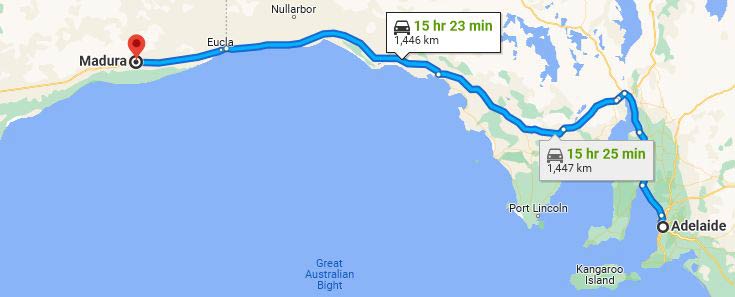I’m sitting at my computer in Port Augusta, waiting for the charge to finish so I can resume my journey to Perth: It becomes the one time in my EV driving career I wish for the convenience of a petrol station!
Since then, I have continued my journey to Perth, and on the way I have been musing on where the current boundaries of the EV use-case are – and I started framing that idea into the question “are we there yet?” when it comes to truly national EV travel and full ICE (internal combustion engine) replacement.
Since buying a Kona EV (three years ago now), I have shown that they ‘don’t ruin the long weekend’, and even at the now relatively slow 70kW DC charge rate of the Kona, they do not slow you down when traveling along major regional and interstate roads compared to the petrol/diesel car.
But how do you go when you do regional/remote commuting-style trips outside of the current DC networks? Well – I decided to test that by driving from Melbourne to Perth to do a short job over there.
From Melbourne to Adelaide, all went well with multiple DC charging sites with several DC chargers at each site. Even on the long weekend when I set off, despite finding the charging sites actually being busy – I always got a spot on arrival. This BTW was unusual for me: in the past, I have been the only one to be found at most DC charging sites.
However, the trip became tricky after reaching my first overnight stop after Adelaide. At that stop (Port Augusta) I hit my first hurdle – driving to the maximum range, I realise the next morning that caravan park charging at 15A doesn’t cut the mustard.
This had always served me well for ‘long weekends’, but I discovered that arriving at 5pm means 17hrs charging to get a 100% charge … and not leaving till after 10am the next day.
For overnight stays on long-distance commuting travel, I realised (belatedly) that I needed to find places with either higher power destination chargers or 32A power outlets where you can use a portable charger offering (for the Kona) 7kW charging.
I rectified this the next night by finding a motel with a Tesla destination charger – meaning the Kona was fully charged by 4am and I could be off at 8am the next day.

As for daytime charging, the best you can do without DC charging (for a Kona) is a destination charger at 7kW or an accessible 32A outlet to plug in a portable high-power EVSE.
By the way, for this route: finding chargers at the right spots can be challenging at times! Even then at best a two hour lunch at 7kW (32A) sees only 80 to 100km recharged in a Kona.

The result is a rather limiting series of hops following my first (non-DC serviced) stop at Port Augusta before I am to hit the first DC chargers over the WA border.
At present, I am into a three-day trip across the DC gap to Madura Pass instead of what would normally for an ICE car be two.
The same will happen for the last 900ish km trip from Balladonia to Perth as there are no DC chargers on the shorter route. (There is by the way, a set of DC chargers on the longer southern tourist route).
So much for the lived experience – what are the results of my musings?
- As the ‘EV Charging Speed War’ evolves (newer EVs appear to be moving to AC charging at up to 11kW three phase and some can even do 22kW AC), AC top-ups will do a reasonable job of extending a day’s driving range.Teslas already do 11kW, as do the Hyundai Ioniq 5, Kia EV6, Polestar 2 and a few others. 22kW is available as an option in some high-end EVs – but it is also soon to be offered in mid-level EVs: as an example, the coming Renault E-Tech Megane.For 22kW capable ones, a 1hr AC charge will return 150ish km charged. This would make AC charging a viable option for people wanting to extend their range to 500 to 700km a day with a 1hr lunchtime top-up.
- When the DC charger network rolls out further (ones to infill these highway gaps are in the planning stages) the problems will resolve for existing EVs along the major routes.
- For drivers in remoter regions where DC charging may never arrive, 11 and 22kW AC charging will become the ‘must have’ option when selecting between available EVs. (As well as larger batteries that give a reliable 600km or more range, like selecting a ‘long-range’ tank option for some 4WDs now).
As for me, I am carefully planning my next day’s route each evening and on the day am prepared to be flexible in my travel speed to conserve energy in the bigger hops – plus accept that life shouldn’t be rushed as much as our hectic lifestyles push us to be. (And, occasionally, wondering “Are we there yet?”)

Bryce Gaton is an expert on electric vehicles and contributor for The Driven and Renew Economy. He has been working in the EV sector since 2008 and is currently working as EV electrical safety trainer/supervisor for the University of Melbourne. He also provides support for the EV Transition to business, government and the public through his EV Transition consultancy EVchoice.

